Ultimate List of Most popular soups of the world
What is it worth eating soup? That is the question that can be answered in every ladle filled to the brim. In my family home, my grandmother always prepared a two-course dinner. But the fact that there must always be soup in my house now is not just a tradition. I cook soups because they taste good, I cook soup, because for me it is a meal as itself, and I just love a bowl of hot, soup filled with veggies, and luscious broth.
The soups are good at any time of the year. In summer, they bring refreshment in the form of fruit and vegetable coolers. In winter, they can warm up a frozen body, which, for example, pig iron cannot. They warm up and satiate you, giving you energy for hours.
Therefore, let us see what the most famous soups is are, that everybody knows by name, but sometimes not necessarily knows how to make it. That is my job here. I present you some classic, that may become you and your family new kind favorites.
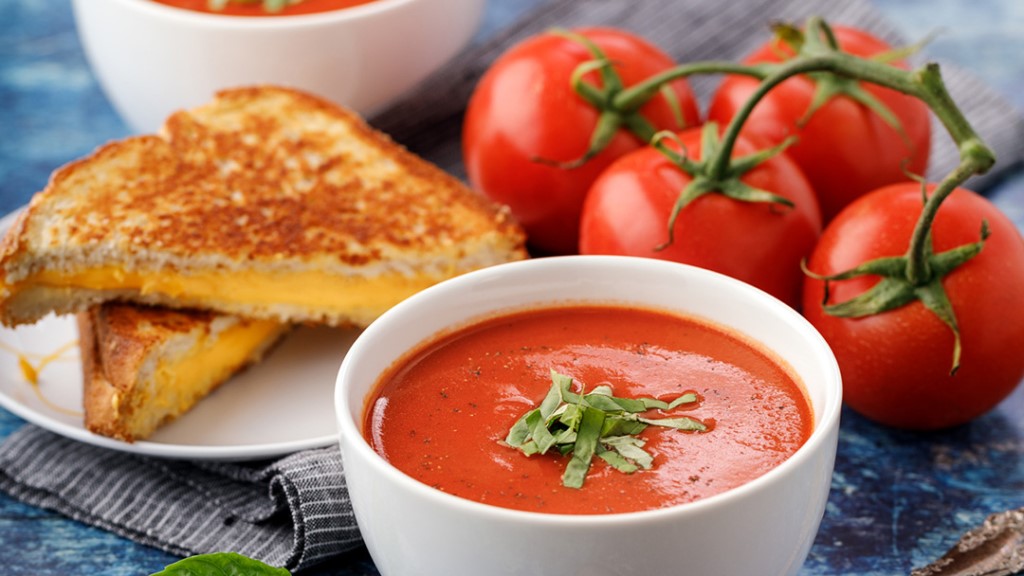
Tomato soup – creamy, puree like consistency, bowl of tomato goodness. Thick tomato soup, made with cream, for additional flavor. Extremely easy to make. Almost every country has its own variation. Over here traditionally serve with grilled cheese sandwich.
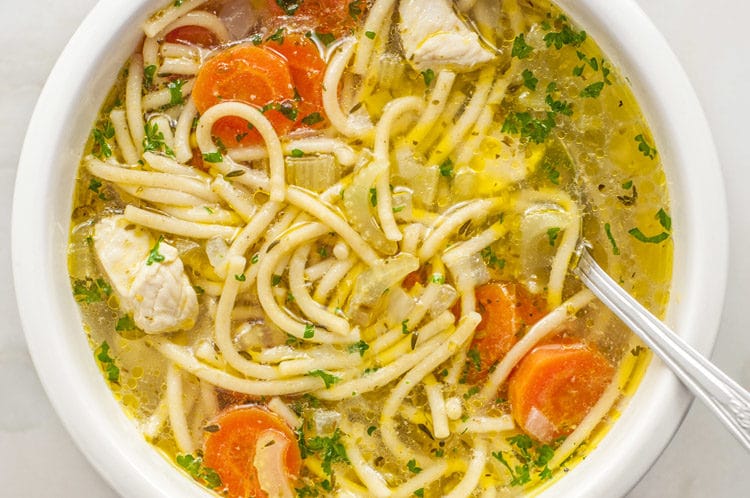
Chicken noodle, Global – for centuries people knew exactly that a bowl of warm Chicken broth, will do you good. Chicken noodle here in America, was first introduced by Campbell® company in 1934. It is a staple in many homes today, all over the world.
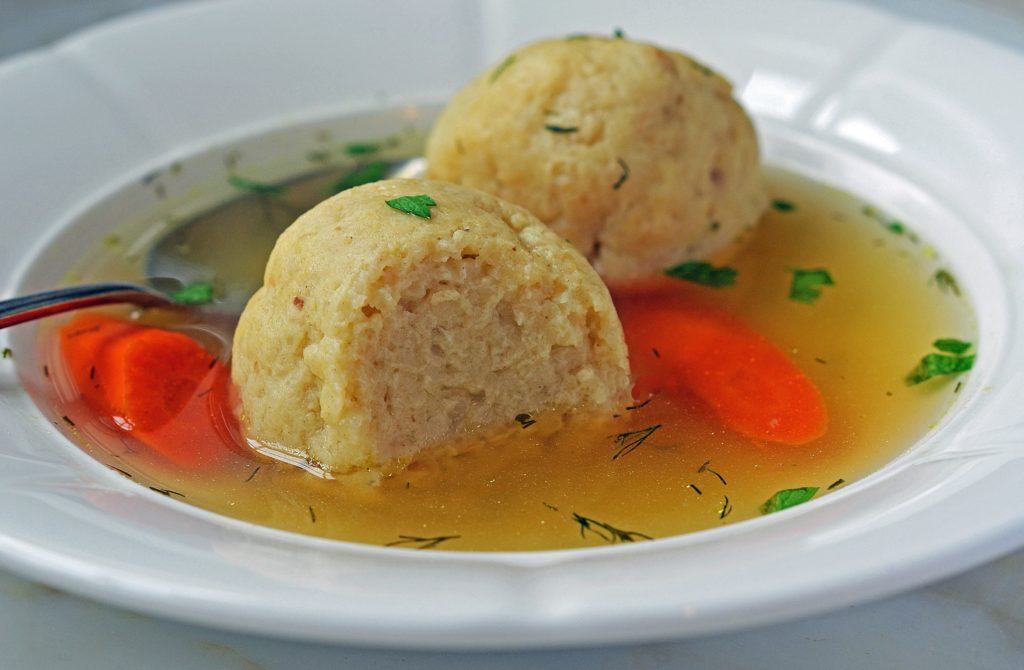
Matza ball soup, Germany -19th century Jewish population created and introduced the soup dumpling to its traditional cuisine. It is a simple dough made of cracker (matzo meal), eggs, fat, and a little water or broth. They are steamed right in a pot of soup where they soak up all the soup’s delicious flavor as they cook. Like most cultural dishes, there are many variations of matzo ball soup and each chef has their own spin or secret touch.
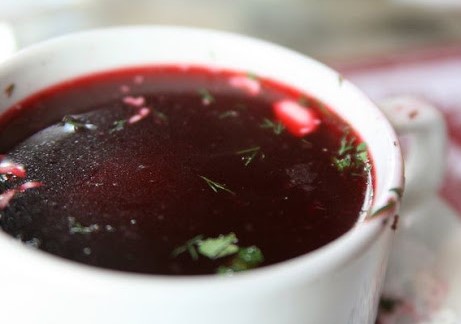
Borsch, Eastern Europe – simply beet soup. Immensely popular in parts of Eastern Europe. Always made from fresh beets. It can be clear, just a broth to drink with dinner, or with vegetables left inside. There are many variations, depends on a country, region and family recipes.
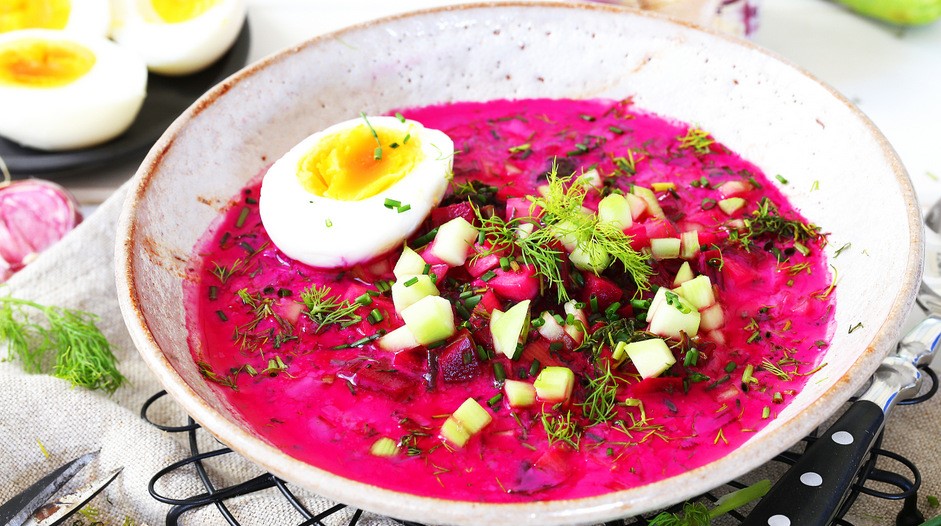
Lithuanian Borsch, Easter Europe – cold variation of the Borsch soup. Clear broth is mixed with finely chopped fresh tomatoes, cucumbers, radishes and dill. Addition of sour cream or buttermilk is a must, to achieve this characteristic light pink color. Absolute favorite in my family, thanks to The Lithuanian roots.
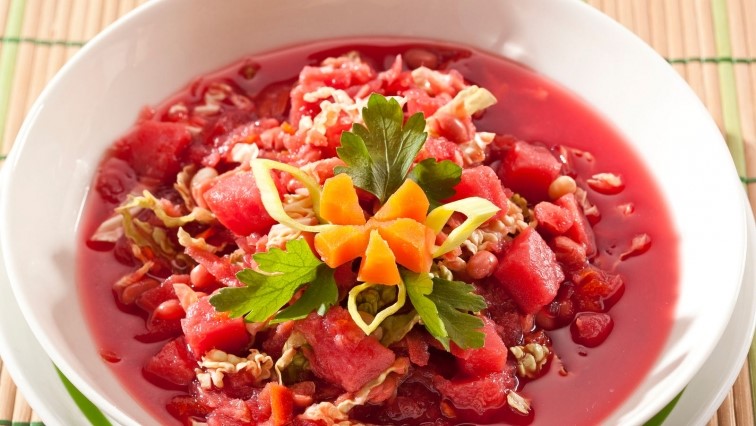
Ukrainian Borsch, Eastern Europe -Another variation of borscht soup filled with so much goodness inside. Cooked with fresh vegetables (as every borsch) that this time, are all kept inside. Addition of white cabbage and large white beans make it even more hearty. Traditionally tipped with dollop of sour cream and fresh dill.

Zupa grzybowa, Poland – wild mushroom soup. One of the staples of polish cuisine. Wild mushrooms, forged in the forest throughout the summer, and dried out. Creamy soup, with onions, carrots and potatoes. The handpicked mushrooms give that unforgettable taste. Garnished with fresh parsley. Personally, I love mushrooms, so that is one of my favorite recipes.

Minestrone, Italy – hearty vegetable soup made with whatever greens you have handy (cabbage, kale, collard etc.), vegetables, elbow pasta, and tomato broth. Traditional version comes without meat inside, but it is all depends on your imagination. This soup is a staple in all Italian American homes.

Gumbo, USA – staple dish in Louisiana state cuisine. Created by melting pot of people living there through colonial Times. This dish had roots in Africa, with the creole local twist. Gumbo is built primarily of a strongly flavored stock, meat or shellfish, a thickener of okra or filé powder (dried and ground sassafras leaves), and so called Louisiana “Holy Trinity “ aka Mirepoix ( traditional mirepoix is two parts onions, one part carrots, and one part celery, whereas the holy trinity is typically equal measures of the three ingredients or one part onions, one part green bell pepper, and one part celery.

Onion Soup (Soupe à L’oignon), France – The broth is simple, made purely with caramelized onions and meat stock. However, the soup is distinguished by croûtes–pieces of crispy baked bread that are placed on top of the soup and are then generously covered with cheese. The whole dish needs to go to the oven, to let the cheese melts, and create that pillowy layer of chewy, cheesy goodness.

Cioppino, USA – is a dish created in San Francisco, by Italian emigrants, longing for traditional Italian seafood Stew. Cioppino is conventionally made from the catch of the day, which is typically a combination of Dungeness crab, clams, shrimp, scallops, squid, mussels and fish, all sourced from salt-water ocean, in this case the Pacific. The seafood is then combined with fresh tomatoes in a wine sauce. The dish can be served with toasted bread, either local sourdough or French bread.

Ramen noodle, Japan – this dish contains Chinese wheat noodles served in a meat or fish-based broth, often flavored with soy sauce or miso, and uses toppings such as sliced pork, nori, menma (condiment made from lactose-fermented bamboo shoots) , and scallions. In America extremely popular as a less sophisticated version, in a form instant package soup, with dehydrated noodles, and flavor packet.

Flaki, Poland – Tripe soup, which is a national polish soup. Thanks to harsher climate and nose to tail policy of using every piece of animal, this dish was created. Traditionally made with beef tripe, that need to be boiled for few good hours. The rest is simple. Onions, carrots, tomato paste and potatoes. Always with heavy taste of marjoram. It is a polish hangover cure.
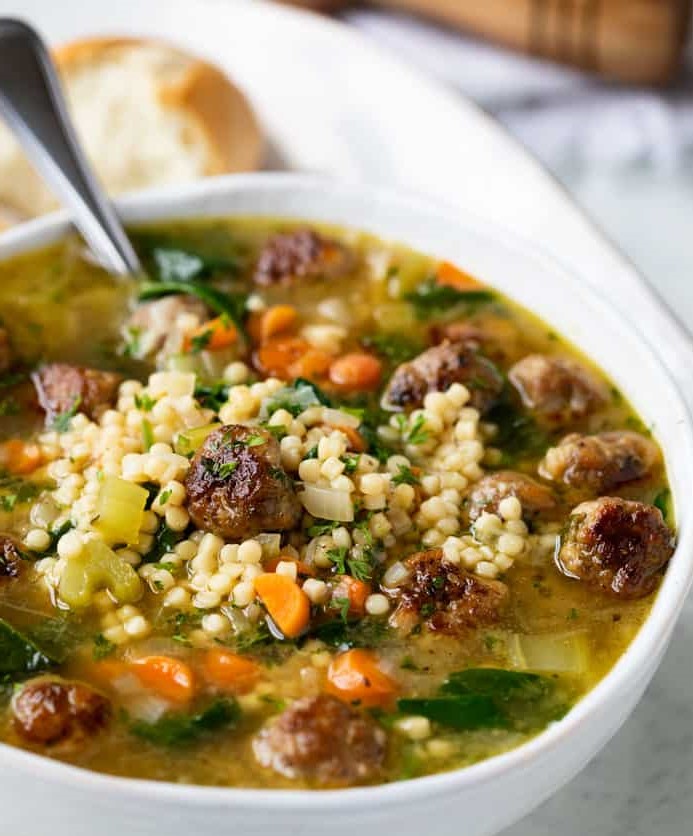
Wedding soup, Italy – the name comes from “marriage” of greens and meat, which are the base of this dish. Wedding soup contains of green vegetables (usually endive and escarole or cabbage, lettuce, kale, and/or spinach) and meat (usually meatballs and/or sausage; the second one sometimes made of chicken and containing Italian parsley and parmesan cheese) in a clear chicken-based broth. Wedding soup sometimes contains pasta (usually cavatelli, fusilli, acini di pepe, pastina, orzo, etc. (check ultimate guide to pasta post)), lentils, carrots, or grated parmesan cheese.

Pho, Vietnam – Vietnam’s national dish, quick street food, comfort food, and simply a way of life. One of the most cherished Vietnamese dishes in the western hemisphere due to its complex, exceptional flavors, and simplicity. Although it is classified as a soup, pho is served as the main course and the two bowls of it never taste the same. It is traditionally made with chicken or beef broth( made on the bones that are cooked for hours until the broth is perfect), garnished with ingredients such as green onions, white onions, Thai basil ( not the same as sweet basil), fresh Thai chili peppers, lemon or lime wedges, bean sprouts, and cilantro or cilantro ( herb from Cilantro family, that tastes like much stronger version of it). Fish sauce, hoisin sauce, chili oil and hot chili sauce or Sriracha may be added to taste as accompaniments.
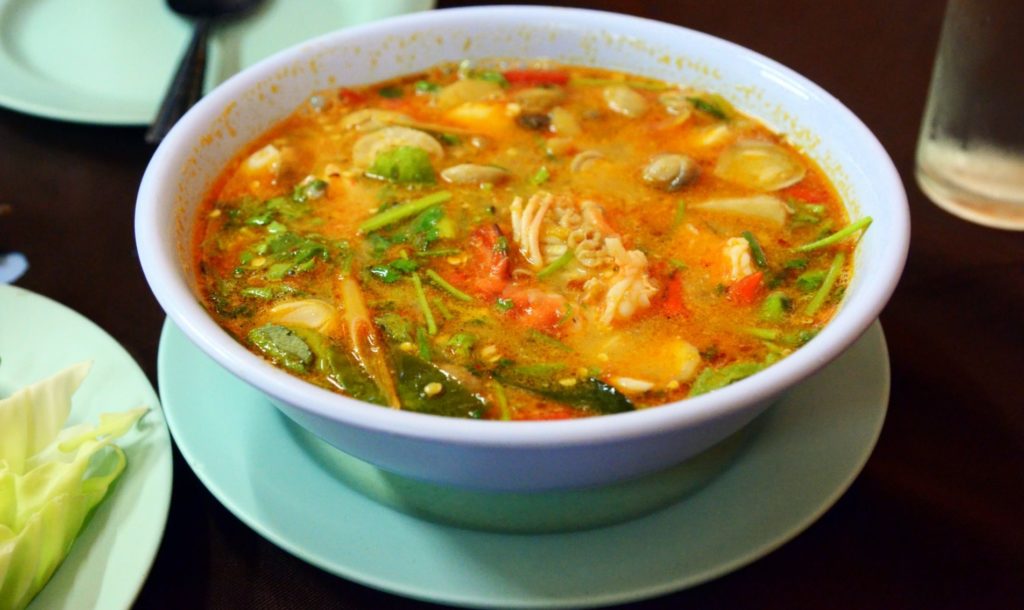
Tom Yum, Thailand – one of the best-known Thai dishes. Spicy, sour, and aromatic soup that is traditionally served with rice. Its flavor is built up from shallots, lemongrass, fish sauce, minced fresh ginger or galangal, shrimps, mushrooms, kaffir lime leaves, lime juice, and minced Thai chili peppers. Generally served as an appetizer, tom yum is traditionally garnished with coriander leaves on top. Due to its popularity, different versions of the soup started to appear over the years, such as tom yum gai, (added chicken), and tom yum Talay (mixed seafood).

Miso soup, Japan – Miso soup is a traditional Japanese soy-based soup made from a stock called dashi, miso paste, and various additional ingredients such as seaweed or tofu. It is estimated that more than 70% of Japanese people consume the soup for breakfast, although it is commonly available at any time of the day. In Japan is believed that this soup is have medicinal properties, as it alkalizes the blood and revives the nervous system. Extremely popular in all sushi bars and restaurants, all over America, thanks to its light and salty flavor.
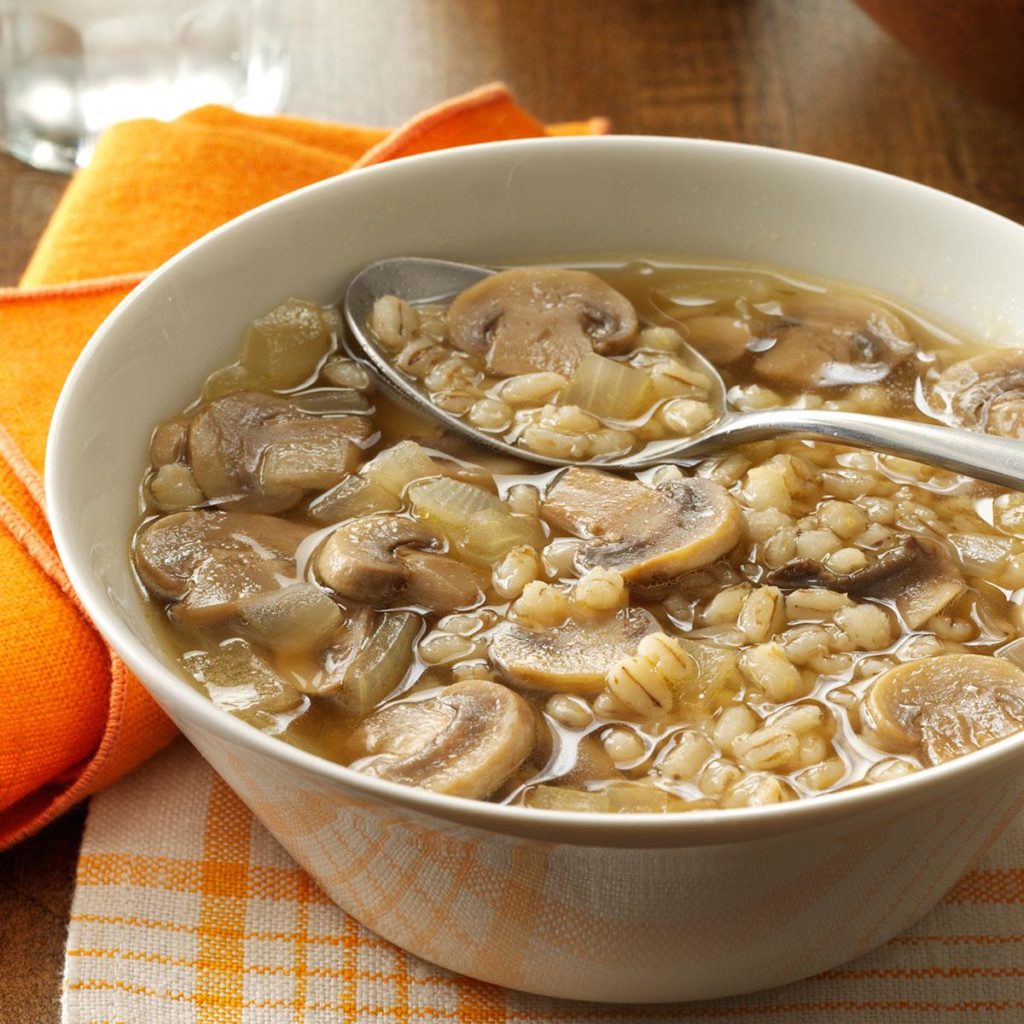
Krupnik, Poland – Mushroom barley – thick soup made from vegetable or meat broth, containing potatoes and barley groats “(kasza jęczmienna”, archaically called “krupy” – hence the name).Common additional ingredients include carrots, parsley, leek, celery, onion, meat, and of course the start of the dish, the dried mushrooms.
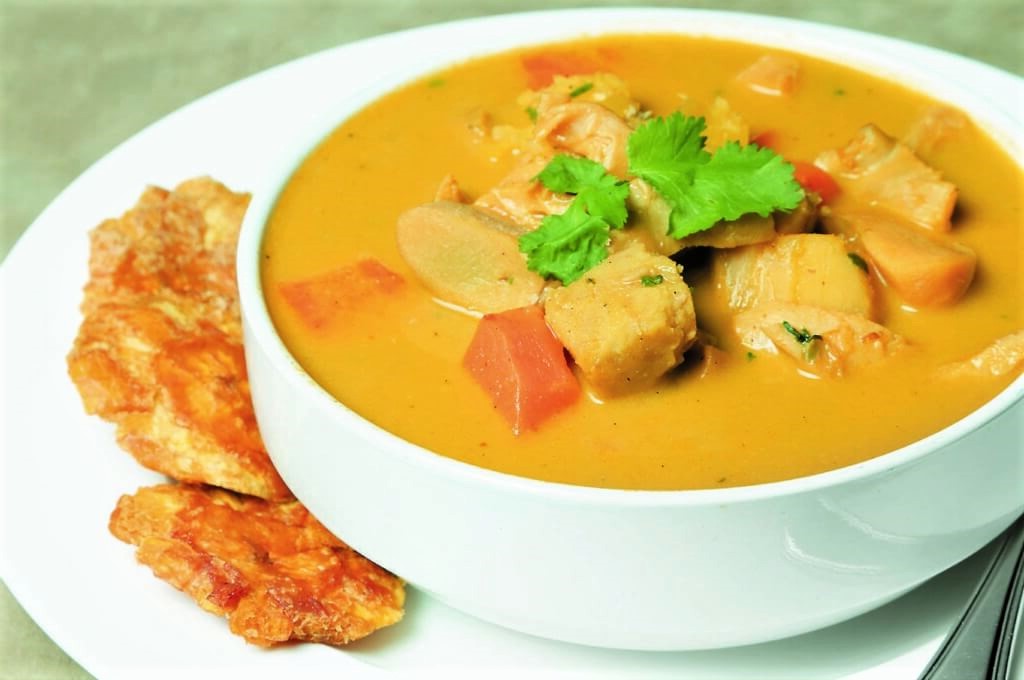
Sopa de Caracol, Honduras – one of the most noteworthy dishes in Honduran cuisine. Large pieces of conch cooked in coconut milk with the addition of conch broth, cassava, plantains, and spices such as coriander, garlic, and chili. For added flavor, it is not unusual to add more vegetables, be it onions, carrots, or finely diced tomatoes

Caldo Verde, Portugal – This kale soup is a traditional soup made with potatoes, chorizo sausage, and thinly sliced kale. Hearty, homey, do not require any of expensive ingredients. Once again, Simple the best.
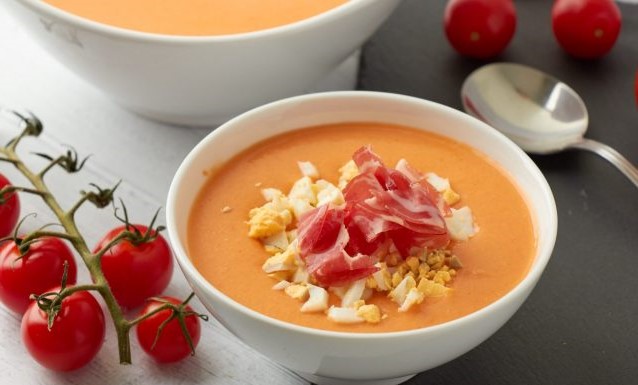
Salmorejo, Spain – Salmorejo is a refreshing Andalusian soup that is traditionally served cold. It is especially popular during the warm, summer days. The soup itself, made of puréed tomatoes, bread, garlic, oil, and vinegar. Thick and creamy, Salmorejo is often garnished with ingredients such as hard-boiled eggs or Spanish ham.

Ajo Blanco, Spain – originated during the Moorish middle ages, predating the arrival of tomatoes and peppers by several centuries. Ajo Blanco traditionally consisted of a puréed mixture of stale bread that was moistened with vinegar and water, a hefty amount of fresh garlic, and almonds — the region’s most abundant crop, but modern recipes also often include ingredients such as milk and green grapes.
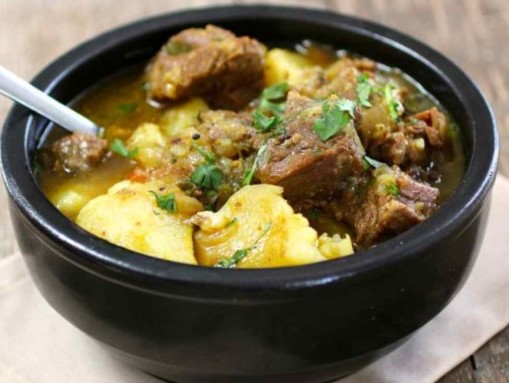
Marak Temani, Yemen – Yemenite soup. Hearty dish made of meat and potatoes. The base of it is a spice blend, that give it characteristic color and aroma. Created by Yemenite Jews, and brought to life, when they moved to Israel. Traditionally eaten for Friday shabbat. Marak Temani has two main versions, one with chicken and one with beef. The beef version, richer, is the one that has been popularized in Israel. In Yemen, the less wealthy Jewish families used chicken, which was cheaper.
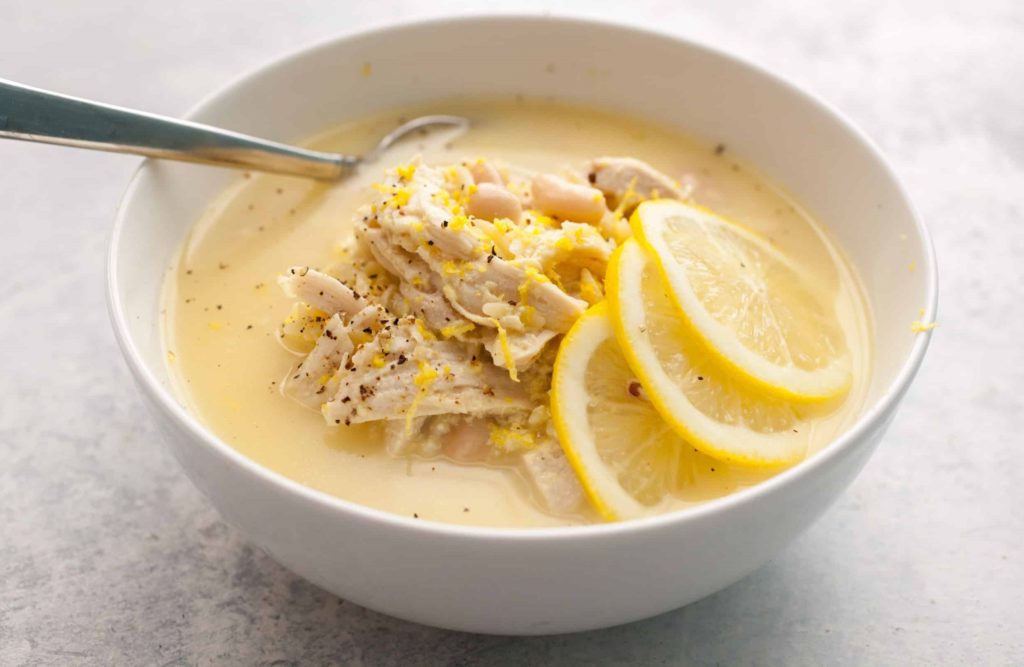
Avgolemono, Greece – soup made with whisked eggs and lemon juice that are combined in a broth up to a point when the soup develops a thick consistency, but not longer, as the ingredients would start to curdle. Served with dolma (Stuffed Grape leaves).

Żurek, Poland – Żurek is a traditional Polish soup characterized by its distinctively sour taste, which comes from sour leavening, or the fermentation of bread and rye flour. The soup also has meats such as sausages, bacon, or ham, and vegetables such as potatoes and mushrooms. Although it is extremely popular throughout Poland, each region has its own version of the dish. It is sometimes served in an edible bowl made of bread with addition of halves of hard-boiled eggs on top of the soup as garnish. Żurek is traditionally prepared and consumed during Easter.
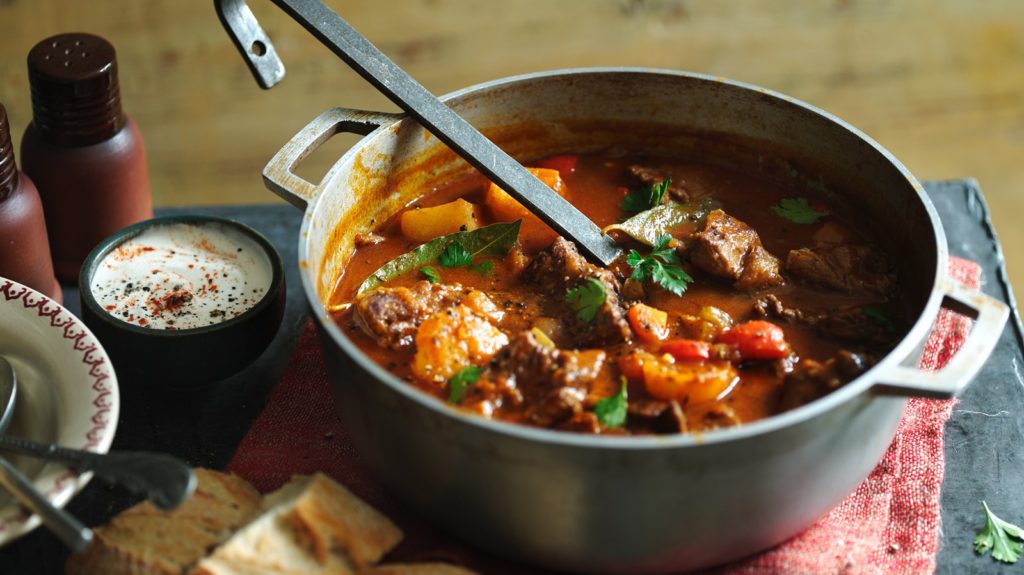
Gulyás, Hungary – this specialty dish, national Hungarian soup is made with beef, that is simmered in a rich paprika-infused broth. Typically, together with onions, bell peppers, root vegetables, various spices, and occasionally tomatoes. Gulyás is a well-known dish that enjoys enormous popularity even outside the Hungarian borders. In many countries, the word goulash is synonymous with a thick stew, always with paprika, while in Hungary Gulyás mostly represents a soup-like this.

Corn chowder, USA – soup prepared using corn as a main ingredient. Basic corn chowder is commonly made of corn, onion, celery, milk or cream, and butter. Additional ingredients sometimes used include potatoes, salt pork, fish, seafood and chicken. In the United States, recipes for corn chowder date to at least as early as 1884.

Pozole, Mexico – aromatic one-bowl stew from Mexico, usually served to crowds on special occasions and celebrations such as Christmas, weddings, or birthdays. Its main ingredient is hominy (large, dried corn kernels that are pre-cooked in an alkaline solution in order to soften them), meat (typically pork, but possibly chicken), and can be seasoned and garnished with shredded lettuce or cabbage, chile peppers, onion, garlic, radishes, avocado, salsa or limes. Other ingredients in the dish include a variety of herbs, spices basically depending on the region. Usual garnishes include lettuce, onion, oregano, pepper, fried tortillas, and lemon, so that each guest can add something to the dish according to their preference.

Consommé, France -This clear soup is made from rich, clarified stock. It is a time consuming, lavish, and expensive dish that results in crystal-clear. The complex flavored soup is completely strained from any type of fat. Often served at formal events as an appetizer, and it is garnished entirely with mild-flavored ingredients which will not overwhelm the delicate soup with heavy flavors, for example: egg yolks or sliced vegetables. Consommé can also act as a base for numerous other soups, such as double consommé, Brunoise, and French onion soup.

Okroshka, Russia – classic Russian cold soup consisting of chopped vegetables, cooked meats, and potatoes in a base of kvass (a fermented wheat drink) or kefir. Depending on the regional varieties, the meat used in Okroshka can range from tongue or sausages to smoked fish, ham, and doktorskaya kielbasa (bologna-style sausage). Nearly all varieties of the soup include cucumbers, scallions, dill, radishes, and hard-boiled eggs. The ratio of vegetables and meat should always be 1:1.

Caldo de camaron, Mexico – dish showcasing tender pieces of shrimp, chayote squash, and carrots in a broth made with chilis and stewed tomatoes. The dish can be found all over Mexico, and its origins lie with the ancient Nayarit, who used to prepare a spicy chili-based soup with shrimp. Its traditionally garnish with chopped avocado and a squeeze of lime juice.
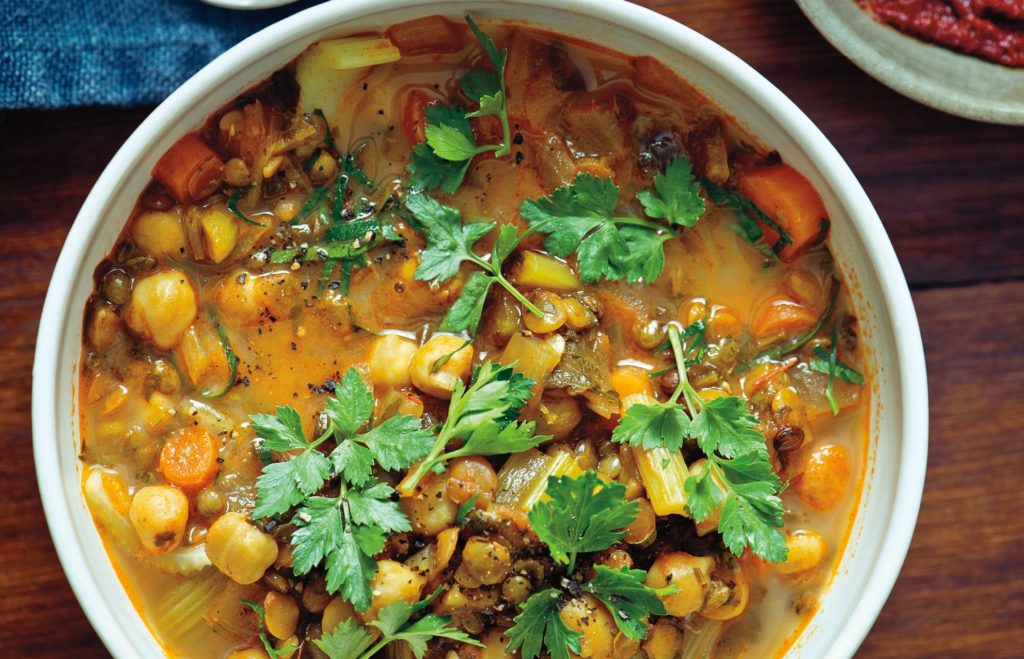
Harira, Morocco – This herb-rich, tomato-based soup, is the most popular soup in Morocco. With a velvety-smooth, creamy texture, of the broth (usually lamb) which is so well-seasoned with cinnamon, ginger, turmeric or another coloring agent like saffron, and fresh herbs such as cilantro and parsley. Composed of the following ingredients, and may vary depending on regions: tomatoes and tomato concentrate, lentils, chickpeas, noodles, Tadouira (thickening mixture made from flour, water and tomato paste), fava beans, onions, rice, meat: (beef, lamb or chicken). It is generally served with hard-boiled eggs sprinkled with salt and cumin.
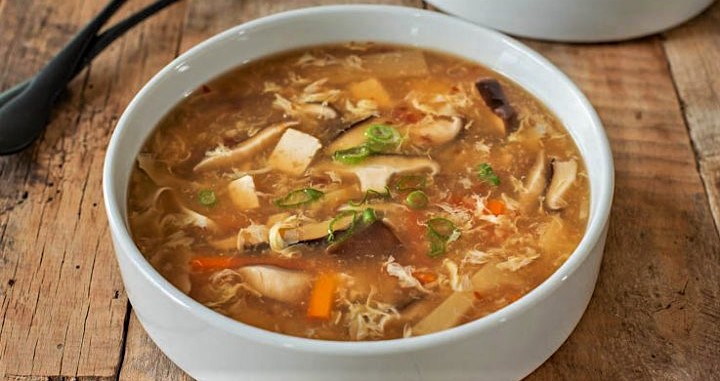
Hot and sour soup, China – Originating from either Sichuan or Beijing in China, hot and sour soup is a classic meal that is appropriate for every occasion and most weather situations. It normally includes ingredients such as day lily buds, bamboo shoots, tofu, wood ear fungus, and pork blood-flavored broth. The hotness comes from red or white peppers, while the sour flavor is achieved by use of vinegar.
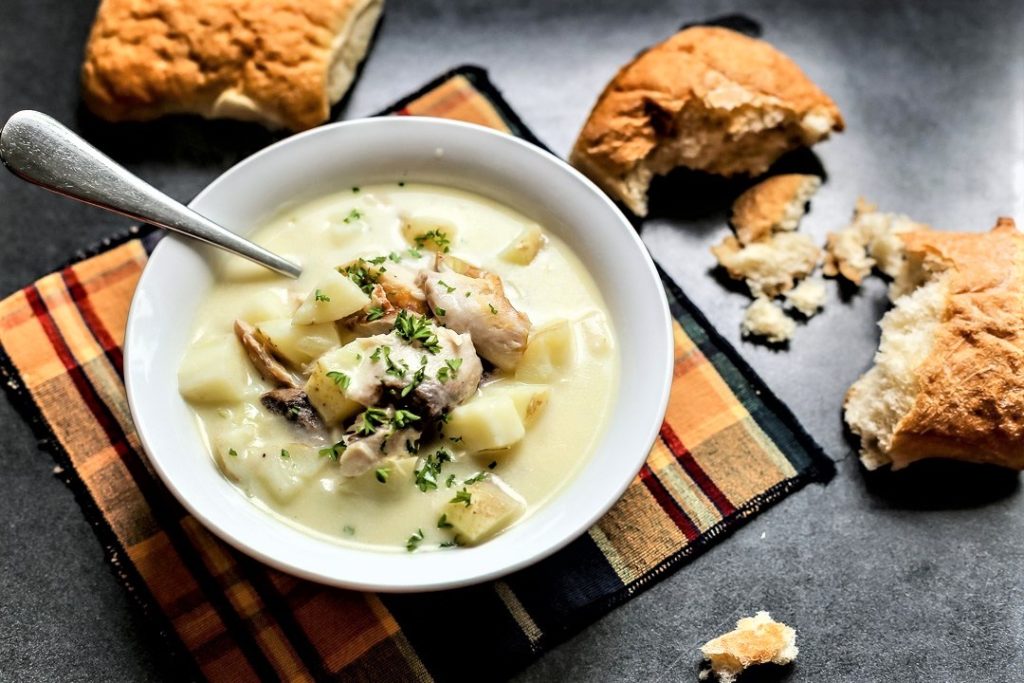
Cullen skink, UK – a thick Scottish soup made of smoked haddock, potatoes and onions. Local recipes for Cullen skink have several slight variations, such as the use of milk instead of water or the addition to cream. Other variations include mashing the potatoes to make the soup thicker. Cullen skink was traditionally served with bread. The soup has much stronger flavor than American chowder and is heartier than classical French bisque.

Açorda, Portugal – Popular bread soup existing in numerous varieties throughout the country. Most Açorda soups have a smooth and thick consistency and utilize a variety of pounded herbs, garlic, olive oil, and boiling water that is poured over diced bread and left to soften. Two of the most famous types include: Açorda de Marsico (sea food based) and Açorda Alentejana (regional specialty in which whole slices of bread are served over the broth).
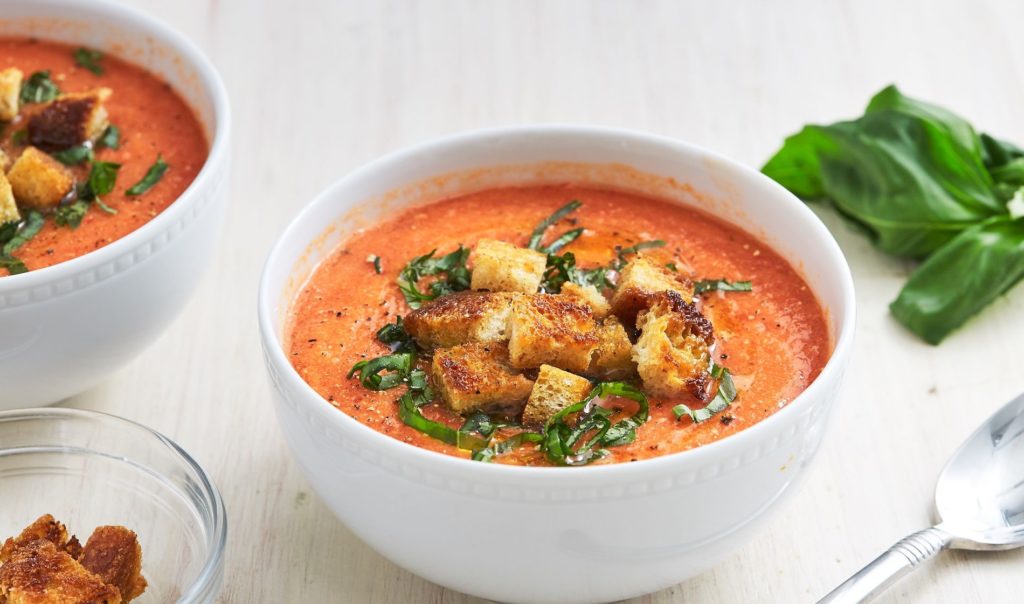
Gazpacho, Spain – An ideal solution for a hot summer day. This cold soup involving of crushed tomatoes, finely chopped cucumbers, onions, peppers, croutons, vinegar, and olive oil. It has the same level of identity with tradition Spanish cuisine as paella to the rest of the world. The soup’s refreshing, cool and acidic flavors is a representation of Spanish cuisine at its best.

Rassolnik, Russia – soup with a exceptional aroma and flavor coming from pickled cucumbers, pearl barley, vegetables such as potatoes, onions, and carrots, fresh herbs, and offal (variety meats, pluck or organ meats, is the viscera and entrails of a butchered animal) such as chicken liver and beef or pork kidneys. Originally, Rassolnik was called” Kalya” and was made with fish instead of offal.

Bisque, France – this and creamy, and rich puréed soup traditionally includes ingredients such as seafood, cream, cognac or wine, and a combination of spices. The name comes from the crustaceans being “twice cooked” (bis cuites) an analogy to a biscuit cookie,) for they are first sautéed lightly in their shells, then simmered in wine and aromatic ingredients. Next step is to combine the luscious broth, with a cream, and get it to uniform consistency, by thickening it with rice. Served with pieces of seafood, display proudly in the center of bowl or plate.

Egg drop soup, China – it is a soup based on clear chicken broth. Thickened with cornstarch slurry and seasoned with soy sauce, ginger. Beaten egg is drizzle over it, to make it curdle. Always topped with fresh green onions.
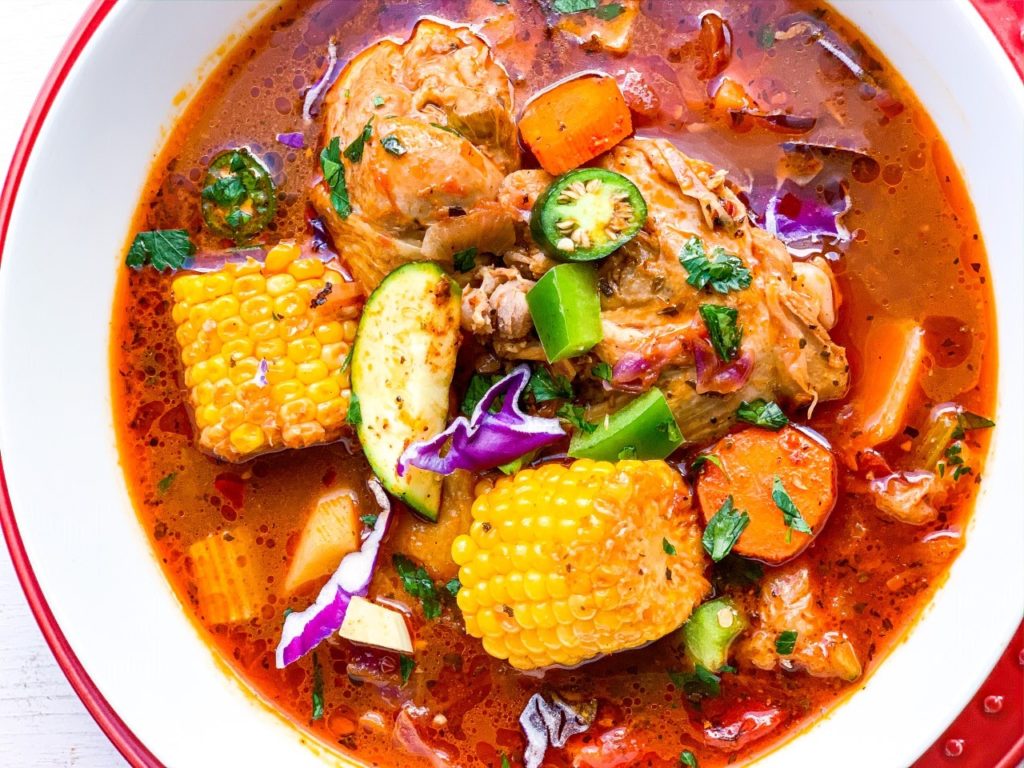
Caldo de pollo, Mexico – literally translation is a “chicken broth”. The soup itself is make with use of typical Mexican spices such as chili powder and coriander, along with key ingredients such as chicken pieces, rice, potatoes, and chopped vegetables. This flavorful soup is thought by many to be a great hangover remedy and is often garnished with a spoonful of guacamole or avocado wedges.
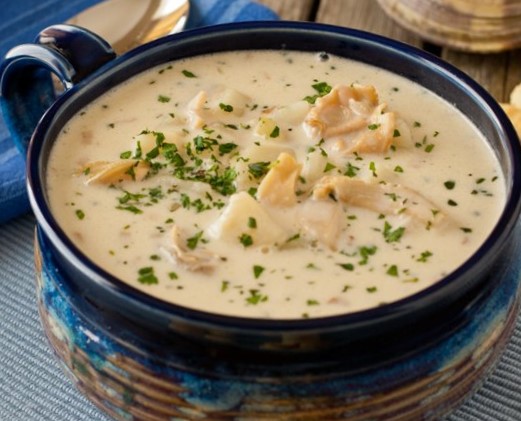
New England clam chowder, USA – One of the earliest and essential American dishes, New England-style clam chowder is a creamy stew made with briny clams, chunks of salt pork, sweet onions, potatoes, and milk. The dish was invented as early as 1620, by the Pilgrims who had landed near Plymouth Rock.
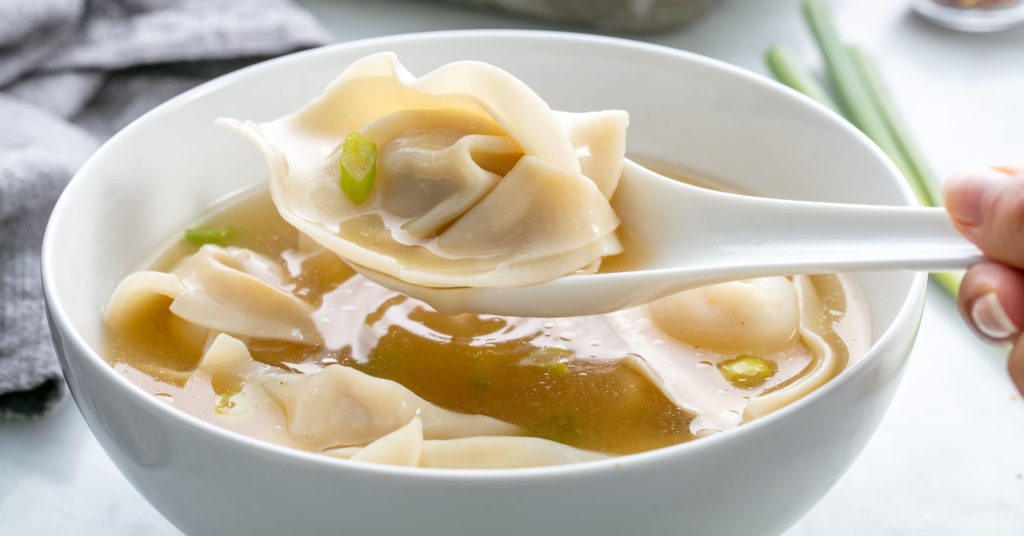
Wonton soup, China – Wonton (Chinese dumplings) soup is a standard of Chinese cuisine and made from clear chicken broth, flavored with ginger, soy sauce, sesame and garlic, with wonton filled with seasoned pork. Wontons are an Asian equivalent of ravioli or tortellini since the dough part is wrapped around meat morsel. Other meats or proteins could be substituted, such as shrimp, ground chicken or turkey, or even ground beef.
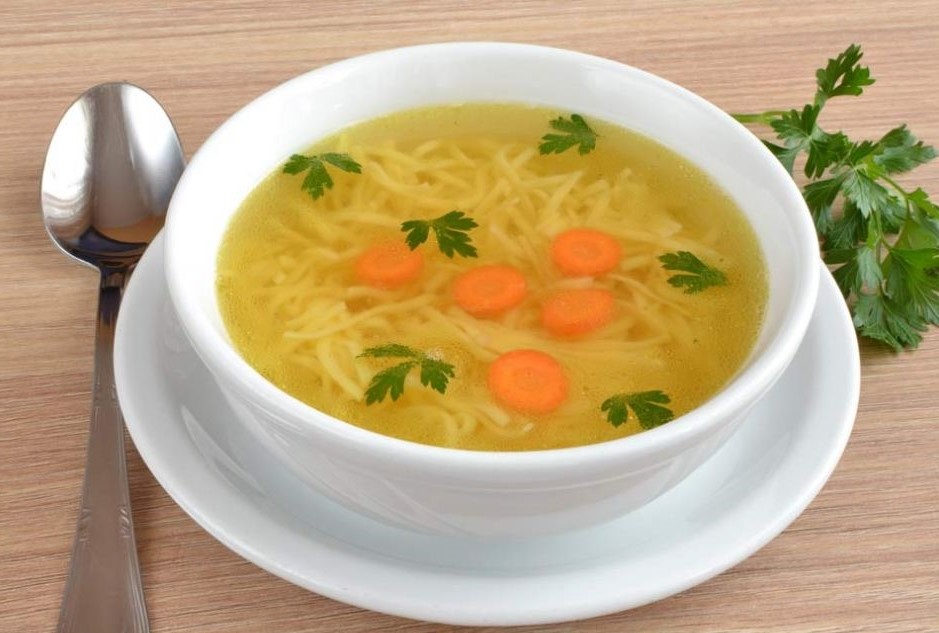
Rosół, Poland – Comforting rosół is a traditional Polish meat soup. Even though the chicken version (rosół z kury), is the most famous variety–beef, veal, turkey, or mixed meat broths are also quite often prepared in some parts of the country. Rosół is usually made with meat that is left on the bone, which contributes to the overall taste. The meat is cooked in cold water with a variety of vegetables such as carrots, celery, onions and peppers. Traditionally served for Sunday dinner, with noodles.

Solyanka, Russia – which comes from the Russian word for “salt” is a soup that possibly originated in Ukraine around 17th century and became beloved by Russians. This is a hearty, thick soup with salty cured meats, sausages, olives, capers, pickles, cabbage, sometimes carrots, and dill and sour cream for garnish. Accompanied, of course, by whole-grain bread. It is an “everything-but-the-kitchen-sink “type of soup, but it tastes so much better than that name suggests. There are many more soup recipes, all over the world, and there is simply no way to describe all of them. Once again, its only my humble interpretation of the world of soups…please let me know what is re your thoughts. Which sups are worth to mention, which ones are y



